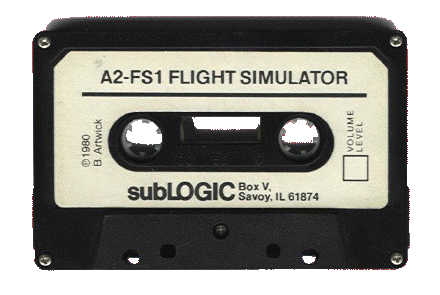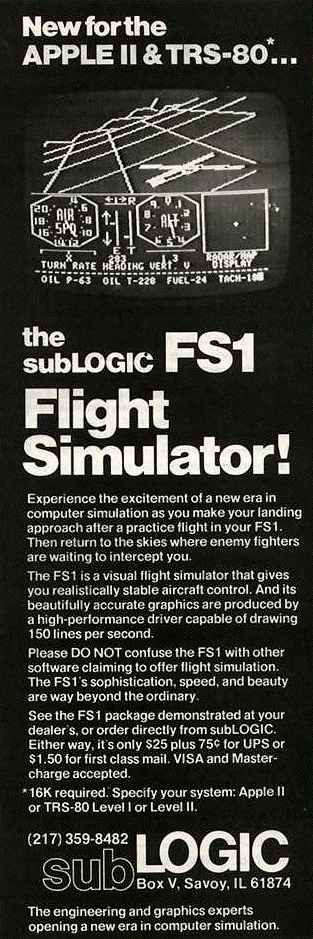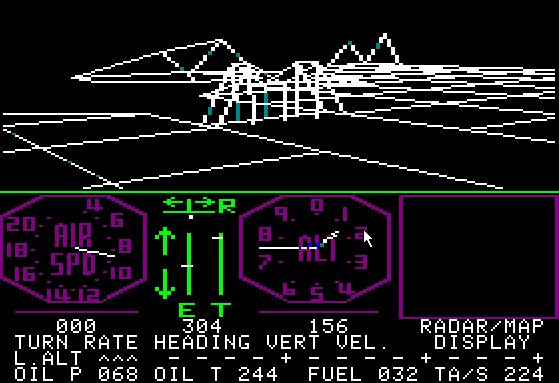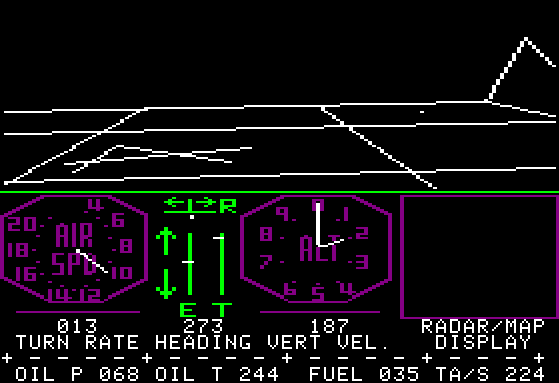|
A2-FS1 Flight Simulator, subLOGIC 1979
(Updated, thanks to Jos Grupping, who runs the Flight Simulator History website. Information in quotes was from e-mail received by Jos Grupping in January 2005.)
"This game was developed by Bruce Artwick (founder of subLOGIC) and would eventually lead to the true dynasty of Flight Simulator games that now span more than 25 years. The latest (ninth) version is Flight Simulator 2004 “A Century of Flight”, also called FS 9, and was released in October 2003 for the IBM PC only."
FS 1 was one of the first games that I played on an Apple II. Although very primitive by today's standards, it was amazing at the time, how the plane was controlled by keyboard and how the line-drawing background (a flat "mountain range") would move properly with the movement of the plane. The screen was divided in two, with a rudimentary panel holding two gauges below and the 3D out-of-the-window view above. Simple, but not essentially different form the screen set-up of the modern versions. I recall one time flying for about 30 minutes going up as steeply as I possibly could, turning the plane down to dive, and seeing the checkerboard grid of the ground and the flat mountain range way "below", about 3 inches in size. You could also fly through the mountains (literally) by going under the line that defined the top, and then you could view the grid and mountains from the other side. A crash (of the plane, not the computer) would cause you to simply end up on the ground, spinning in a circle. Very simplistic, but for its time very cool and fun.

The cover of the game as sold in 1979. Notice that this was the cassette version of the game. The "British Ace" part of the game allowed you to shoot at an enemy plan (which appeared on your screen only as a dot in the distance, regardless of how close you got to it.

The cassette used to load the game. At a later date, subLOGIC released A2-FS1 on floppy disk, which is the version I used when I first got to play this in 1981.

The advertisement, as seen in computer magazines of the day. The graphics on the TRS-80 were not as good as those on the Apple II, since the TRS-80 had only blocks to drawn with, somewhat like one-fourth of the size of the Apple II lo-res block graphics.

A view of the mountains at approximately 750 feet altitute.

This appears to be the mountains again, with an additional mountain peak in the foreground.
 A view of the enemy's landing strip, and the tiny dot in the upper right part is the enemy base.
|

